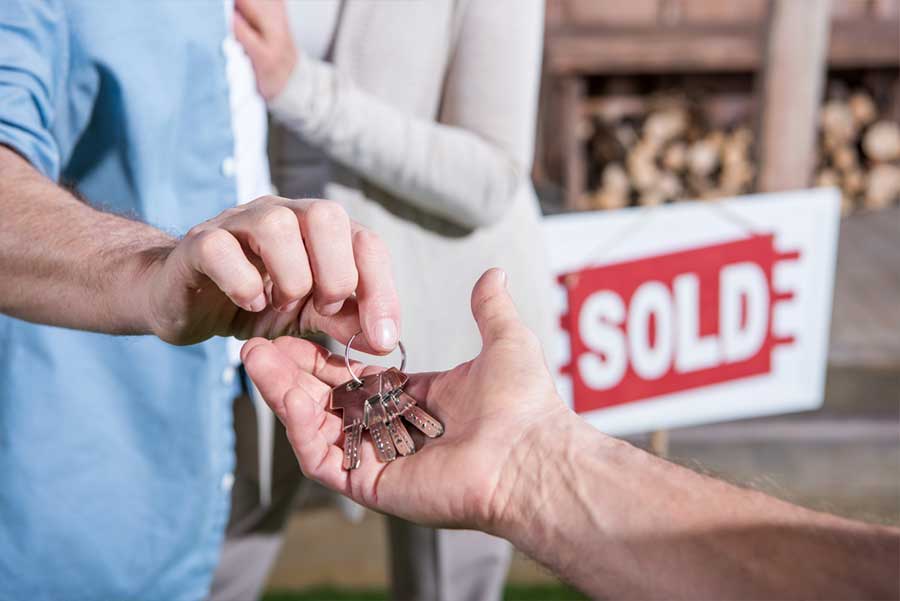If you’re a first-time buyer in England or Northern Ireland, you won’t pay any stamp duty on the first £300,000. This means if the house you want to buy costs £300,000 or less, you won’t pay any stamp duty at all, saving you up to £5,000. First-time buyers in Scotland pay no stamp duty on the first £175,000. There are no first-time buyer discounts in Wales.
It’s no secret that buying a house is expensive. It’s not just the deposit you need to find, there are legal fees, searches and surveys to pay for too. But if you’re a first-time buyer, there’s some welcome news – you could get a reduction in stamp duty – leaving you a bit of spare cash for a house warming party.

What is stamp duty?
Stamp duty is a tax you need to pay when you buy property or land in the UK. Depending on where you live, stamp duty on property has different names:
- In England and Northern Ireland it’s Stamp Duty Land tax (SDLT)
- In Scotland it’s called Land and Buildings Transaction Tax (LBTT)
- In Wales it’s known as Land Transaction Tax (LTT)
Although the taxes have different names, they’re essentially all the same and what you pay is based on a percentage of the property price.
But stamp duty isn’t just a flat percentage of the total property price – it’s tiered. This means you pay different percentages on different portions of the house price.
There’s also a tax-free amount so if your home falls into this bracket and doesn’t exceed it, you won’t pay any stamp duty at all.
In England and Northern Ireland, the SDLT brackets are:
| Stamp Duty Land Tax in England and Northern Ireland | |
| Stamp duty threshold | SDLT rate |
| Value up to £125,000 | 0% SDLT |
| The next £125,000 (value up to £250,000) | 2% SDLT |
| The next £675,000 (value up to £925,000) | 5% SDLT |
| The next £575,000 (value up to £1.5 million) | 10% SDLT |
| Anything over £1.5 million | 12% SDLT |
It looks confusing but the easiest way to think of it, is that SDLT is charged in steps. Each ‘step’ your house price climbs, the more stamp duty you’ll pay.
Let’s take an example using the average cost of a home in England which is currently £242,964:
- You’ll pay nothing for the first £125,000.
- Because your house price has taken two steps up the SDLT ladder and sits in the second tier, you need to pay 2% SDLT on anything more than the tax-free amount of £125,000 – which is £117,964 (£242,964 minus £125,000).
- The total SDLT you’ll need to pay is £2,359.28
In Scotland and Wales, the current stamp duty brackets are:
| Land and Buildings Transaction Tax in Scotland | |
| Stamp duty threshold | LBTT rate you’ll pay |
| Value up to £145,000 | 0% LBTT |
| Value up to £250,000 | 2% LBTT |
| Value up to £325,000 | 5% LBTT |
| Value up to £750,000 | 10% LBTT |
| Value over £750,00 | 12% LBTT |
| Land Transaction Tax in Wales | |
| Stamp duty threshold | LTT rate you’ll pay |
| Value up to £180,000 | 0% LTT |
| Value up to £250,000 | 3.5% LTT |
| Value up to £400,000 | 5% LTT |
| Value up to £750,000 | 7.5% LTT |
| Value up to £1.5 million | 10% LTT |
| Value over £1.5 million | 12% LTT |
If the house you wanted to buy was more expensive and portions of the property price fell into other tiers, you’d need to add all of these together to get your total stamp duty.
If you don’t want to work out your own stamp duty, these handy calculators can help:
Stamp duty relief and reductions for first-time buyers
If you’ve never been a home owner, you could be eligible for First Time Buyers Relief (FTBR) which is a reduction in stamp duty. And if you’re really lucky, it could mean you pay nothing at all.
Reliefs are only available in England, Northern Ireland, and Scotland. That might seem unfair for anyone in Wales but the 0% stamp duty threshold there (£180,000) is well above the average house price – currently £159,559 according to Land Registry figures.

How much stamp duty will I pay as a first-time buyer?
In England and Northern Ireland, first-time buyers pay:
- 0% on the first £300,000
- 5% on anything over £300,000 and up to £500,000
So, if you live in England or Northern Ireland and your home costs £350,000, you’ll pay 5% on just £50,000 (the value over £300,000). This means you’ll pay SDLT of £2,500 instead of £7,500 compared to other buyers.
If the house you want to buy costs more than £500,000, you won’t be entitled to any discount at all.
In Scotland, first-time buyers pay:
- 0% on the first £175,000
- Standard rates on anything over £175,000
For example, if you wanted to buy a house for £190,000 in Scotland, you’d need to pay LBTT on £15,000 (the value over £175,000). The total LBTT you’ll need to pay is £300 compared to £900 for other buyers.
Stats from HMRC (HM Revenue and Customs) show that more than 180,000 first-time home buyers have benefitted from FTBR – collectively saving more than £426 million.
Am I eligible for first-time buyers stamp duty tax relief?
The potential savings are significant so it’s not surprising there are some strict rules about eligibility – for instance:
- You cannot have owned property or land before, either in the UK or abroad.
- You cannot have inherited any other property anywhere in the world.
- The house you’re buying must be your main place of residence.
If you’re buying a house with someone else, both of you have to meet the rules otherwise you won’t qualify.
For more information and the legal ins and outs, head to HMRC, SDLT relief for first time buyers or Revenue Scotland, LBTT first time buyer relief.

Can I get first time buyers relief on a shared ownership home?
The good news is that since Autumn 2018, the same rules apply if you’re a first-time buyer and want to buy a stake in a shared ownership property. In England and Northern Ireland, under these new guidelines, you can either:
- Pay SDLT on the full property value, or
- Pay SDLT on just the share you’re buying
In Scotland, you’ll have to pay LBTT on the property’s full price and not just the bit you’re buying.
When is stamp duty payable?
In Scotland and Wales, you have to pay stamp duty within 30 days of completion . It used to be the same in England and Northern Ireland but since March 2019, buyers now have just 14 days to make a full payment.
How do I make a stamp duty payment?
Your solicitor or conveyancer will usually work out the amount of stamp duty you owe and organise the payment on your behalf. They’ll do this by submitting what’s known as a ‘return’ – which sets out the details of your purchase.
If you’re in England or Northern Ireland, your SDLT payment goes to HMRC. In Scotland, stamp duty is collected by Revenue Scotland and in Wales it goes to the Welsh Revenue Authority.
Can I use my mortgage or Help-to-Buy ISA to pay for stamp duty UK?
It’s up to you how you fund your stamp duty payment – whether that’s through savings, your bonus from a Help-to-Buy ISA, or a mortgage. Just bear in mind that increasing your mortgage to pay for stamp duty just means you’ll pay more interest in the long run.
Get the most out of your money and step up the property ladder
House buying is one of the most stressful things you can do but with our help and advice, it doesn’t have to keep you awake at night.
Our step-by-step guide takes you through the buying process from beginning to end so you can plan, save and move in to your new home with the minimum amount of fuss.